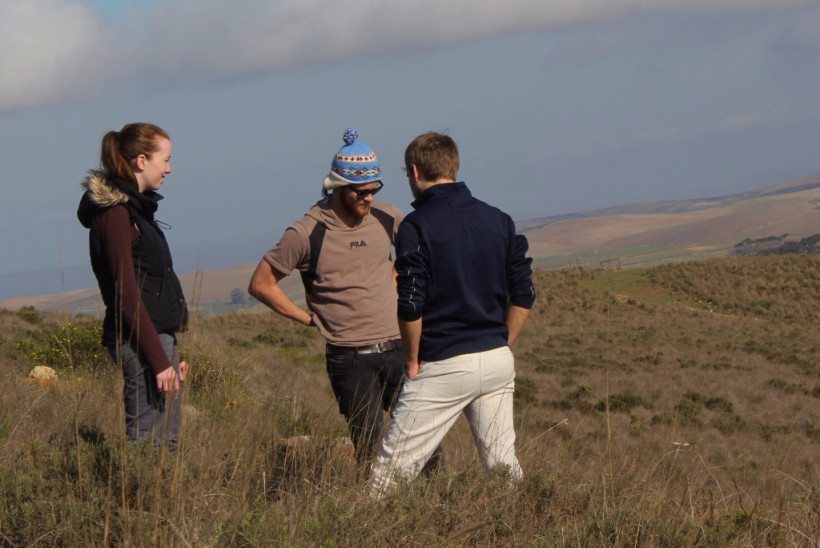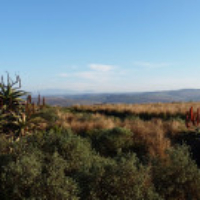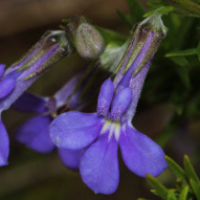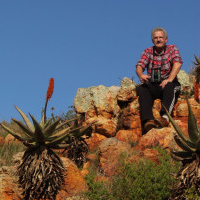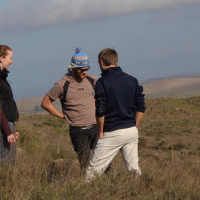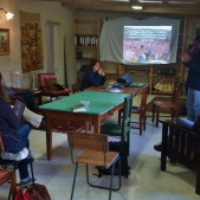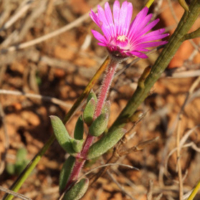The third meeting of the Overberg Lowlands Conservation Trust research group
Renosterveld is one of South Africa’s most under-conserved vegetation types. Ploughing for agriculture is one of the greatest threats the veld faces, but for that which remains mismanagement can also be a destructive force. One of the greatest challenges we face is the current lack of knowledge about renosterveld, particularly in the context of its ecology and management. In terms of research until now renosterveld has been the poor sister of fynbos and has been relatively neglected by ecological researchers. At present knowledge is lacking to the extent that important management decisions can only be taken by inferences from other vegetation types within the Fynbos Biome.
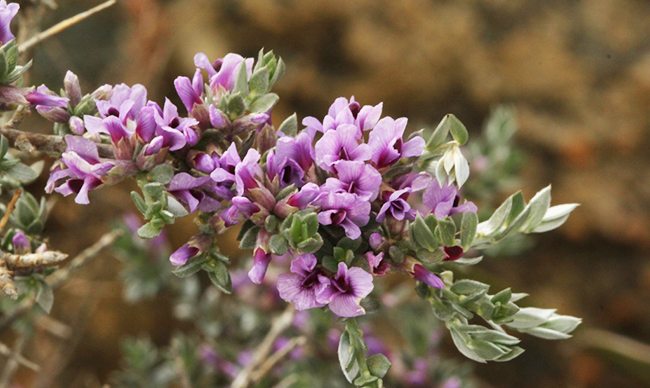
The Overberg Lowlands Conservation Trust has therefore made the task of facilitating research to inform management in renosterveld a key priority. One of the greatest achievements to this end has been the development of a new research centre at the heart of the new Haarwegskloof Renosterveld Reserve in the eastern Rûens adjacent to the world famous De Hoop Nature Reserve. Researchers now have a home from home which acts as an affordable base from which to conduct their work. Other guests wishing to visit the area are welcomed, providing a space for researchers and other visitors to interact and share ideas and knowledge.
The Trust has also brought together an interdisciplinary group of researchers from a variety of different organisations and institutions including University of Cape Town, University of the Western Cape and Stellenbosch University to develop a research strategy building on present knowledge about renosterveld and to identify areas for future research. This has been done through a series of workshops of which both students and established academics are encouraged to attend.
The third of these meetings took place last week. This is the first time that we have met at the new research centre at Haarwegskloof. The meeting was well attended and provided a lively forum for discussion as well as a space for students to present their work to the group. At the time we held the first of these workshops I was in the early stages of conceptualising my PhD project, and was able to put forward my ideas to the group. This led to being paired up with Dr Samson Chimphango and Prof Muthama Muasya from the University of Cape Town (UCT) who are now supervising my research on impacts of grazing in Overberg Renosterveld. At the time the World Wildlife Fund had just brought the renosterveld at Haarwegskloof and we explored the derelict remains of the farmhouse, for which there were great plans. We have come a long way since then.
There is now a large group of students undertaking postgraduate research in the renosterveld of the Overberg in collaboration with the Trust. Representatives from various different research groups presented at the workshop on progress to date and any significant research findings. Dr Samson Chimphango is overseeing a small group of students with funding from the Department of Agriculture researching grazing in Overberg renosterveld, with the long term aim of finding an indigenous legume that can be used in the same way as Lucerne to form artificial pastures on transformed lands in the region. Meanwhile Associate Professor Muthama Muasya has just been awarded funding from the NRF to conduct a multidisciplinary project studying quartz patches throughout Southern Africa. Jannie Groenewald is the first PhD student working on the project and presented his research proposal to the team.
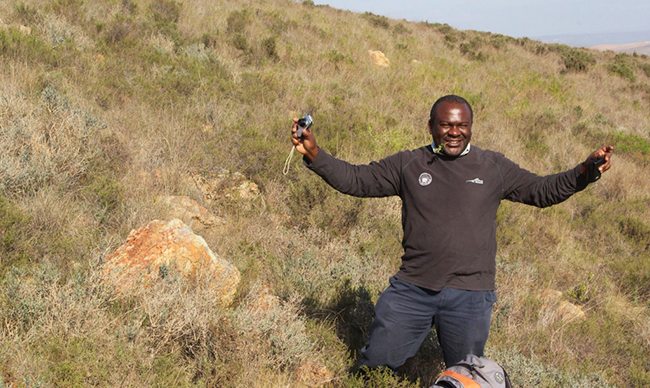
Also in attendance was Dr Rob Simmons from the Fitzpatrick Institute or Ornithology at UCT. His main research interest is the Black Harrier, a charismatic and beautiful raptor which is now considered to be ‘Endangered’ on the IUCN Red List. There are thought to be less than 1,000 breeding birds remaining. Rob supervised Dr Odette Curtis’s Masters research, which found that Black Harriers only bred successfully in the largest renosterveld fragments, emphasising the importance of conserving these habitats in perpetuity. New to the group was Jan de Waal from Stellenbosch University, with a strong interest in working onwatercourses, as well as Dr Pippin Anderson and her students from UCT. Pippin has a variety of difference research interests, including restoration ecology of renosterveld although her work has concentrated on Peninsula Shale Renosterveld until now. Her new students Oliver Cowan (PhD) and Abigail Graham(MSc) presented short resumes of their research, on functional ecology and small mammal ecology in Overberg renosterveld respectively.
The formal proceedings concluded with two group discussions to brainstorm research ideas for future student projects. Discussions were centred around two key themes: ecosystem function and watercourse restoration. For the latter the Overberg Lowlands Conservation Trust has just been awarded a large grant by the Nedbank / WWF Green Trust. There was discussion around everything from extinction debt in renosterveld to the role of mammals as ecosystem engineers.
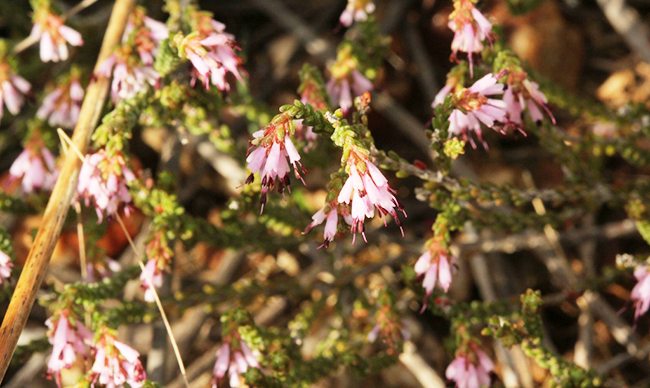
To end the two-day workshop we blew the cobwebs away with a visit to Spitzkop, one of the neighbouring farms to Haarwegskloof. Extension work has only just begun here and we would like to thank the owner for allowing a fascinating field day here. The farm supports a highly diverse renosterveld flora on ferricrete and quartz geology and a recent burn has contributed to the heterogeneity of the habitat. It is home to numerous specials. An enjoyable time was had by all and I would like to thank Odette and the Trust for organising and facilitating a highly successful workshop.

